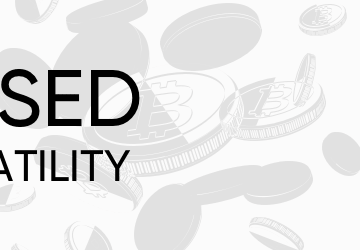2020 Looks Set to Be a Quieter Year for Monetary Policy
It was the year central banks jumped back into the fray, cutting interest to deal with a slowdown driven by a trade war and subsequent decline in manufacturing.
Some, like the Federal Reserve, had at least made some headway on rate hikes before 2019, creating room to loosen amid the weakest growth since the financial crisis. But others, like the European Central Bank, found themselves in a more difficult position and had to cut benchmarks further below zero, stoking resentment about subzero rates.
2020 looks like it might be a quieter year for monetary policy. Fiscal may take up some of the lifting work, and growth prospects are looking a little brighter.
The Bloomberg Central Bank Outlook
How major central banks will change interest rates by the end of 2020

The economic numbers are mostly mixed rather than positive, though. On balance, the monetary policy bias still leans to the dovish side. While the big guns are set to hold fire, others, especially in the emerging markets, are projected to cut again.
What Bloomberg’s Economists Say: “A moment of calm in the global economy is obscuring a serious challenge for the world’s central banks. Low rates for most and negative for some means policy space is severely depleted. We don’t think the next downturn is coming in 2020. When it does come, central banks won’t have all the answers.” — Tom Orlik
Here is Bloomberg Economics’ quarterly review of 23 of the top central banks, which together set policy for almost 90% of the global economy.
G-7 Central Banks
Here’s what to expect

U.S. Federal Reserve
- Current federal funds rate (upper bound): 1.75%
- Forecast for end of 2020: 1.75%
Fed Chairman Jerome Powell has left no doubt that interest rates are on prolonged hold, saying Dec. 11 the current stance “likely will remain appropriate” unless the Fed’s favorable outlook for the economy sees a material reassessment. He spoke after policy makers kept interest rates steady in a 1.5% to 1.75% target range following three consecutive cuts, and published forecasts showing 13 of 17 officials projecting no change in rates through 2020. That would keep them on the sidelines during a presidential election year.
That said, the U.S. central bank isn’t entirely fading into the background. Strain in money markets has pushed it to buy Treasury bills to restore ample reserves in the banking system. Some investors argue it will need to broaden the scope of those purchases to short-dated coupon-bearing securities. Powell said they were not ready to take such a step, but would do so if necessary.
What Bloomberg’s Economists Say: “The Fed is comfortably on hold for the foreseeable future, as policy makers are less concerned by the risks which justified their ‘insurance cuts’ in the latter half of 2019 — trade tensions, below target inflation and sluggish global growth. The threshold is high for policy adjustments in the near term, particularly for rate hikes, and the impetus to stand pat will increase as the U.S. election draws nearer.” — Carl Riccadonna
European Central Bank
- Current deposit rate: -0.5%
- Forecast for end of 2020: -0.5%
The ECB has pledged to step up stimulus again if needed, yet officials have publicly signaled that they favor a pause after Mario Dragh pushed through a contentious package in September to aid the slowing euro-zone economy.
Policy makers are increasingly pointing to the detrimental side effects of the institution’s negative deposit rate — such as squeezed bank profitability and risks to financial stability — and Christine Lagarde, Draghi’s successor at the helm of the institution, has promised to assess them as part of the first strategic review since 2003.
Economists and investors expect rates to stay on hold and QE to continue through the whole of 2020 and beyond. But the central bank may yet be tested again if the economy falters under trade uncertainties or the bloc’s manufacturing meltdown spreads to the services sector.
What Bloomberg’s Economists Say:“Mario Draghi used the end of his tenure to shape the Governing Council’s response to the persistent slowdown in the euro-area economy. President Christine Lagarde’s first press conference confirmed policy makers are unlikely to change course over the next year. They will focus instead on their strategic review. We expect the new round of bond buying to go on for two years.” — Maeva Cousin & David Powell

Bank of Japan
- Current policy-rate balance: -0.1%
- Forecast for end of 2020: -0.1%
The outlook for the Bank of Japan in 2020 is looking a little brighter after the launch of a government spending package to support growth and some signs of improvement in the global economy. That’s likely to keep the bank on hold for now. With its key rate already in negative territory and assets on its balance sheet worth more than the nation’s economy, the hurdle to move again is high despite guidance the bank says is tilted toward easing.
Still, Governor Haruhiko Kuroda will carefully monitor developments in the U.S.-China trade talks and the economic hit from a sales tax increase in the autumn. Some economists are starting to doubt if the impact of the tax hike really will be smaller than on previous occasions as is hoped by policy makers. But it may still take a damaging jump in the yen to move the needle at the BOJ.
What Bloomberg’s Economists Say: “The Bank of Japan heads into 2020 with significant less weight on its shoulders. That’s not to say the inflation and growth picture has improved. But with a fiscal stimulus package in the pipeline and JGB yields comfortably within the target range, there’s much less urgency. We expect the BOJ to keep its current policy framework unchanged through 2020, barring an unexpected shock.” — Yuki Masujima
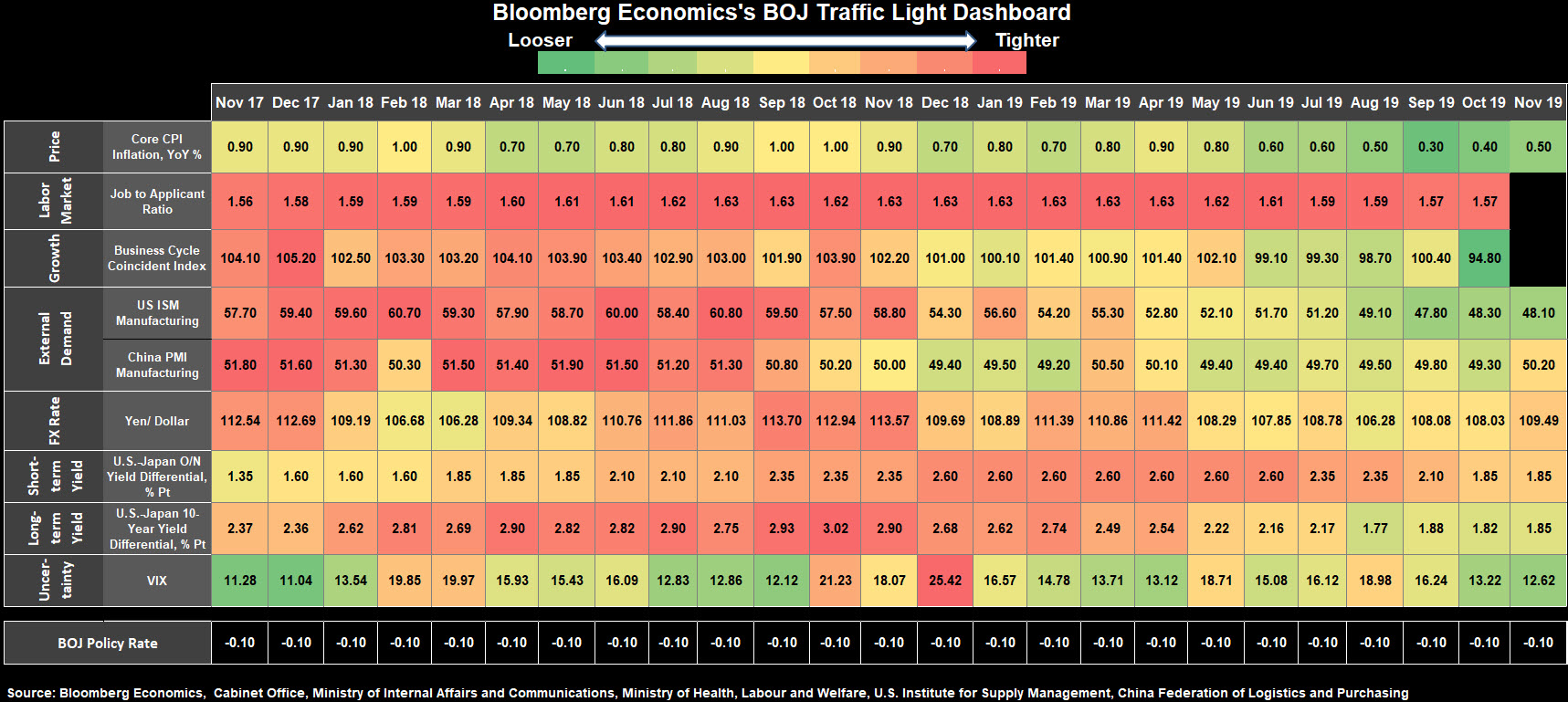
Bank of England
- Current bank rate: 0.75%
- Forecast for end of 2020: 0.75%
The Bank of England will finally get a new governor in 2020, bringing to an end an often chaotic search for a successor to Mark Carney.
Boris Johnson’s decisive win in December’s election both cleared the way for his government to take the nation out of the European Union on Jan. 31, and also name the U.K.’s top regulator Andrew Bailey as the Canadian’s successor. Bailey, who starts on March 16, will have to cope with a global slowdown and a persistent dearth of investment. Most worryingly, another Brexit deadline is already looming, with the U.K. needing to secure a trade deal with the EU by the end of next year unless Johnson asks for an extension.
For now, concern about the outlook means two of the BOE’s nine policy makers want to cut interest rates. All eyes will be on whether Johnson’s win, as well as Brexit developments, change the picture.
What Bloomberg’s Economists Say:“Weak growth momentum and below target inflation means the Bank of England is likely to maintain its dovish bias in early 2020. But if our forecast plays out and the combination of looser fiscal policy and reduced Brexit uncertainty lift growth next year, we expect the central bank’s tone to change. We have penciled in a rate increase in 4Q2020.” — Dan Hanson

Bank of Canada
- Current overnight lending rate: 1.75%
- Forecast for end of 2020: 1.75%
Governor Stephen Poloz ends 2019 with the highest policy rate among major advanced economies at 1.75%, and is expected to hold that title until his seven-year term comes to an end in June. The Bank of Canada has cited two big reasons for resisting the global easing trend: inflation has been near its 2% target for well over a year and policy makers are wary of fueling a further increase in debt.
One main downside from the central bank’s outlier status has been a stronger currency that is hurting exporters. But pressure on the Bank of Canada to match rate cuts by the Federal Reserve and others is easing. There are signs the world economic outlook is stabilizing and markets are paring back bets that global monetary loosening has much left to go. That makes the Bank of Canada’s diverging policy path less of a risky bet for Poloz’s eventual successor.
BRICS Central Banks
What may be coming in China, India, Brazil, Russia and South Africa
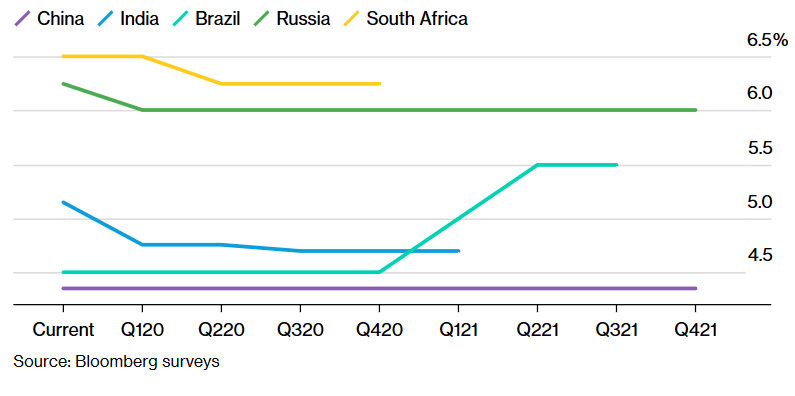
People’s Bank of China
- Current 1-year best lending rate: 4.35%
- Current 7-day OMO reverse repo rate: 2.50%
- Forecast for end of 2020: 4.35%; 2.35%
Analysts predicting the start of large-scale monetary easing by the People’s Bank of China in 2019 were persistently disappointed, and Governor Yi Gang has indicated he intends follow the modest, targeted path for stimulus in 2020. That said, if weakness in the world’s second-largest economy worsens, then economists expect the central bank to continue to release cash into the system via cuts to the reserve ratio, as has been a preferred method to shore up output this year.
The cautious approach to easing is determined by China’s current battle with a form of stagflation — consumer price gains driven beyond the PBOC’s target of 3% by food coupled with factory prices in decline. Economists currently forecast economic growth to slow below 6 percent next year, a development that Communist Party leaders seem comfortable with. A recent revision to 2018 GDP data means that the long-standing goal to double the size of the economy this decade is more easily in reach. That lifts some of the burden on the PBOC to artificially boost the expansion.
What Bloomberg’s Economists Say: “The People’s Bank of China is pushing down lending rates steadily and incrementally. The drop in the one-year LPR in November underlines its effort to prop up growth and counter disinflationary pressures. A similar fall in the five-year LPR — the benchmark for new mortgage loans — was a surprise and suggests that a cooling housing sector is giving the authorities more room for monetary stimulus.” — Chang Shu
Reserve Bank of India
- Current repo rate: 5.15%
- Forecast for end of 2020: 4.7%
India’s central bank is likely to resume easing interest rates, perhaps in the middle of 2020 and once headline inflation comes off the boil. Costly onions have pushed inflation closer to the upper end of the Reserve Bank of India’s 2%-6% target band, limiting policy makers’ ability to support an economy expanding at its weakest pace in more than six years.
A much higher than expected spike in inflation was the reason for the RBI’s surprise pause on rate cuts in December after delivering 135 basis points of easing in five back-to-back moves this year. However, Governor Shaktikanta Das has made it clear that there’s more space for monetary easing and a lot depends on how these actions are timed.
What Bloomberg’s Economists Say: “The Reserve Bank of India’s shock hold on rates in December signaled that it’s more concerned about a temporary surge in onion prices pushing headline inflation higher than slumping growth. We expect the central bank to keep rates on hold again in February due to the further surge in onion prices since then. RBI’s accommodative stance signals that room for further easing is available.” — Abhishek Gupta
Central Bank of Brazil
- Current Selic target rate: 4.5%
- Forecast for end of 2020: 4.5%
Brazil’s central bank is closing a monetary easing cycle that has taken its benchmark interest rate to an all-time low of 4.5%. While investors are still debating whether the rate may drop an additional 25 basis points, they mostly agree it should stay near the current level by end-2020.
The unprecedentedly long spell of low interest rates is supported by the fact that inflation expectations remain within the official target for the next couple of years, at least. Latin America’s largest economy is also gaining traction after nearly three years of disappointing performance, but the recovery remains gradual.
What Bloomberg’s Economists Say: “BCB started a new round of rate cuts last July but appears to be close to a pause. Anchored inflation expectations and ample economic slack base our expectation that it will remain at this level through end-2020, absent surprises. An additional, smaller 25bps cut in the February meeting cannot be ruled out if inflation and growth surprise on the downside, or if the currency strengthens until then.” — Adriana Dupita
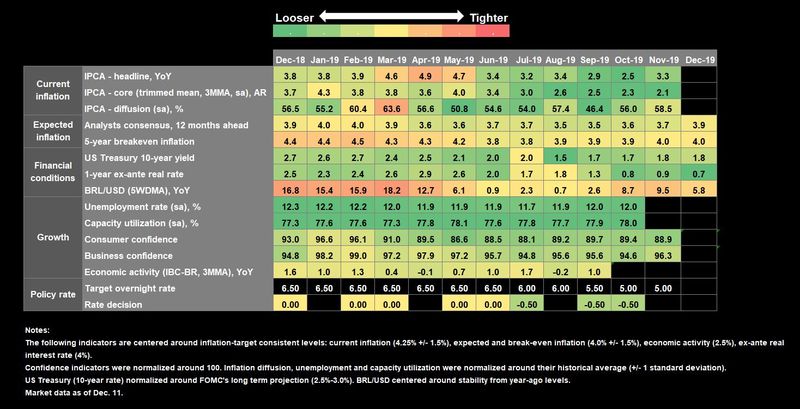
Bank of Russia
- Current key rate: 6.25%
- Forecast for end of 2020: 6%
After years of struggle to bring down high inflation, Bank of Russia Governor Elvira Nabiullina is now facing a serious undershoot of her 4% target. Five consecutive rate cuts have so far failed to stoke price growth or do much to boost the sputtering economy, partly because of a delay to government spending in the second half of 2019.
Nabiullina said in December that the effect of easing will take time and the central bank needs to wait to evaluate the impact. Another rate cut is possible at the next meeting in February or later in the first half, but not guaranteed, she said. Russian local-currency government bonds have attracted inflows of about $16 billion this year due in part to faster-than-expected easing. Investors are waiting to see if 2020 will bring more of the same.
What Bloomberg’s Economists Say: “Sliding inflation will keep one more rate cut on the table in 2020, but policy makers are likely to pause to assess the impact of 150 basis points of reductions since June. If price pressure remains muted, as we expect, the next move could come as soon as March. Signs of a firmer rebound in inflation, as President Vladimir Putin’s fiscal stimulus finally gets going, might put policy on hold for longer.” — Scott Johnson
South African Reserve Bank
- Current repo average rate: 6.5%
- Forecast for end of 2020: 6.25%
The South African Reserve Bank is facing pressure to ease after the economy unexpectedly contracted in the third quarter and power cuts raised the risk of a second recession in as many years. Inflation is at a nine-year low and close to the bottom of the target range of 3% to 6%.
Still, the Monetary Policy Committee has made it clear that some of the factors weighing on economic growth — such as policy uncertainty and the deterioration of government finances — will probably prevent it from cutting rates. Using monetary policy to compensate for government failures “is not the way forward,” Governor Lesetja Kganyago said at the final MPC meeting of 2019.
The prospect of the country a losing its last investment-grade credit rating at Moody’s Investors Service in 2020 may also prevent easing. While the move is largely priced in, it’s likely to weaken the rand. A downgrade could result in a selloff of between $5 billion and $8 billion of South African bonds, Deputy Governor Kuben Naidoo said.
MINT Central Banks
Interest-rate predictions for Mexico, Indonesia, Turkey and Nigeria
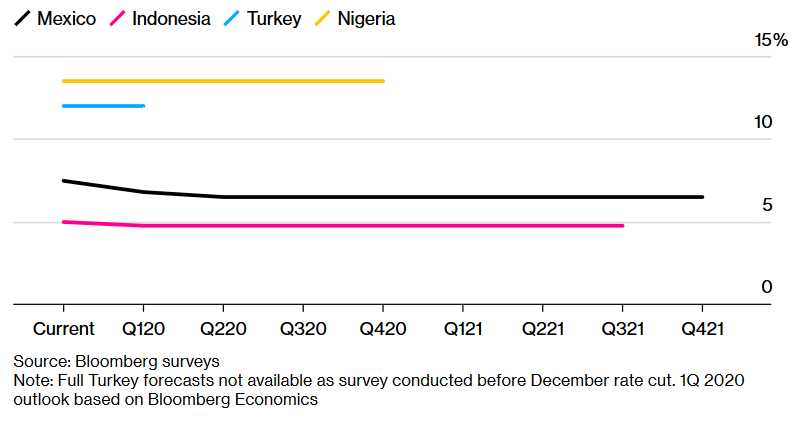
Banco de Mexico
- Current overnight rate: 7.25%
- Forecast for end of 2020: 6.5%
Mexico’s central bank slashed the interest rate a full point in 2019 from a decade high after inflation reached its 3% target and economic growth flat-lined. With a muted economic rebound expected in 2020, policy makers are forecast to continue loosening.
While Banco de Mexico expects inflation to pick up slightly in the first quarter of next year, it’s projected to return to near their goal after that. The majority of the board says monetary policy needs gradual adjustment, voting for quarter-point reductions. Policy makers appointed by President Andres Manuel Lopez Obrador have voted for steeper half-point cuts recently, pointing out that the central bank’s stance remains restrictive even after the easing in 2019. Mexico has the highest real interest rate, or borrowing costs minus inflation, among Group of 20 nations.
What Bloomberg’s Economists Say: “Banxico should continue slowly cutting interest rates in 2020. Lower inflation, subdued pressure on prices and abating inflation expectations support the outlook. Interest rates remain high and cuts imply less restrictive instead of expansionary monetary conditions.” — Felipe Hernandez
Bank Indonesia
- Current 7-day reverse repo rate: 5%
- Forecast for end of 2020: 4.75%
Indonesia’s central bank has been on an aggressive run of easing, lowering borrowing costs by 100 basis points since July in a bid to bolster faltering growth. While Southeast Asia’s biggest economy is holding up quite well compared to others, growing at about 5%, it has felt the effects of a global slowdown and the U.S.-China trade war, with export growth having contracted for 13 straight months.
With the economy expected to grow this year at its slowest pace since 2017, Governor Perry Warjiyo has signaled more rate cuts are in the pipeline, although dependent on incoming information on the health of the economy. At the same time, inflation is subdued by Indonesia standards and is expected to moderate further, prompting Bank Indonesia to set a new inflation target range of 2%-4% for 2020 from 2.5-4.5% this year, pointing to more room for further rate cuts.
What Bloomberg’s Economists Say: “More rate reductions appear to be in the pipeline for 2020, though we expect the pace to slow dramatically. The Federal Reserve signaled an end to its easing cycle, which gives Bank Indonesia less room to maneuver if it wishes to maintain a wide interest rate differential in support of the rupiah. A truce in the U.S.-China trade war and significant progress on structural reforms, though, could reduce the risk premium needed to attract capital inflows.” — Tamara Henderson
Central Bank of Turkey
- Current 1-week repo rate: 12%
- Forecast for end of 2020: 11% (BE forecast)
Turkey’s central bank may be about to find out the limits of its easing cycle next year, when President Recep Tayyip Erdogan says interest rates should fall to single digits while the inflation rate is expected to go up.
Emboldened by the currency’s stability in recent months, the bank’s Monetary Policy Committee reduced its key rate a total of 12 percentage points, exceeding all forecasts made six months ago. Now the return on the lira adjusted for inflation is barely on par with emerging market peers’ average. It may prove extremely difficult for Governor Murat Uysal to abide by his pledge to maintain a “reasonable” rate of return without upsetting the president, who is adamant that inflation will continue to slow if the bank keeps slashing borrowing costs — something that goes against accepted central bank assumptions.
What Bloomberg’s Economists Say: “The political pressure will be immense with the number of monetary policy committee meetings rising to 12 next year. But the bank may be unable to deliver the president’s orders. High inflation will probably prevent rates from falling by more than 100 basis points, although balance of risks is skewed toward deeper cuts.” — Ziad Daoud
Central Bank of Nigeria
- Current central bank rate: 13.5%
- Forecast for end of 2020: 13.5%
The Nigerian central bank will continue its tight policy stance in 2020 as inflation expectations are picking up. Food prices have been rising due to supply constraints caused by a closure of land borders to stop smuggling. While the central bank sees these moves as temporary, Governor Godwin Emefiele has said he would only consider rate cuts when inflation slows to the upper end of the target band of 6% to 9%. It’s been outside that range for more than four years.
Keeping the monetary policy rate at 13.5% will also help support the naira, which is under pressure due to dwindling reserves. While the central bank is keen to boost economic growth in the continent’s biggest oil producer it’s likely to rather keep using non-traditional policy tools, such as raising lenders’ loan-to-deposit ratios to force them to give out credit and support private-sector output.
Smaller G-20 Economies
What’s next for South Korea and Australia

Bank of Korea
- Current base rate: 1.25%
- Forecast for end of 2020: 1.25%
The Bank of Korea is expecting a gradual economic recovery in 2020 as the effects of two rate cuts in the last six months and an expansionary budget feed through the economy and global demand picks up. If the expected recovery fails to materialize, Governor Lee Ju-yeol will face pressure to ease policy further, though the central bank doesn’t have much room for maneuver with the benchmark rate at a record low and household debt at a record high.
Lee has said it’s premature to consider the alternative of taking unconventional measures such as quantitative easing. A majority of economists surveyed by Bloomberg see the BOK either holding rates steady at 1.25% or cutting once to 1% next year. A handful expect two cuts or a hike.
What Bloomberg’s Economists Say: “Cautious optimism on growth and continued concerns about financial risk point to a prolonged pause from the Bank of Korea in the year ahead. Governor Lee Ju-yeol has reiterated that the central bank still has some policy space, but fiscal policy will likely take the lead, with another expansionary budget due for 2020..” — Justin Jimenez
Reserve Bank of Australia
- Current cash rate target: 0.75%
- Forecast for end of 2020: 0.25%
The RBA is closing in on its effective lower bound — estimated by Governor Philip Lowe as a cash rate of 0.25% — when further monetary stimulus will require a shift to unorthodox policy. Lowe has suggested that while he doesn’t expect to have to go the unconventional route, if he did, a version of QE would be his approach.
A consensus is emerging among Australian economists that in the absence of fiscal stimulus — which the government is resisting — the RBA is likely to have to turn to QE at some point. Growth is weak, business and consumer sentiment soft and unemployment is expected to edge higher. Lowe, a self-confessed “glass-half-full optimist,” argues the economy is at a gentle turning point.
So most analysts expect more of the same: a weak economy requiring ongoing RBA stimulus. That’s against a central bank that maintains the worst is over and the economy is likely to gradually improve in 2020.
What Bloomberg’s Economists Say: “It’s hard to see the Australian cash rate going anywhere but lower in 2020. But once at the ELB, QE wouldn’t come automatically. The hurdle would be high. Whilst there’s a strong turnaround in house prices in Australia’s two largest cities, Sydney and Melbourne, forward looking indicators on the labour market point to 2020 being a year where the RBA takes the cash rate to the ELB, and guides that rates will be held there for a very long time.” — James McIntyre
Central Bank of Argentina
- Current rate floor: 58%
- Forecast for end of 2020: N/A
Argentina’s recently-appointed central bank chief Miguel Pesce is facing a daunting task, with an economy in crisis and an inflation rate of more than 50%. He aims to slash price growth to single-digit rates by the end of 2021, and says both monetary policy and a “social accord” proposed by President Alberto Fernandez’s administration will be part of this.
Fernandez only took office this month, and during the campaign trail, advisers said the central bank would seek to keep the Argentine peso at relatively weak levels in a bid to boost exports and turn the economy around. The strategy would require interventions in the foreign exchange market.
To control inflation, the bank might seek to rein in monetary aggregates while the government tries to strike deals with the productive sector to keep prices stable.
What Bloomberg’s Economists Say: “The new government has a clear focus on growth and poverty relief, and is very likely to use credit as a lever on that front. In the meantime, Economy Minister Martin Guzman has already hinted that capital controls will not be lifted at this time, and that interest rates are not ‘the only tool’ to fight inflation — keeping the risk of price freeze in the air. The bottom line seems to be that interest rates are about to fall both in nominal and (even more so) in real terms.” — Adriana Dupita
G-10 Currencies and Small East Europe Economies
Interest-rate forecasts for Switzerland, Sweden, Norway, New Zealand, Poland and the Czech Republic
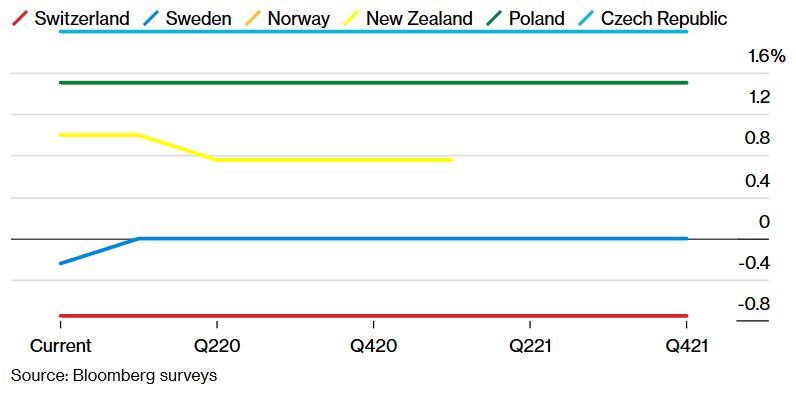
Swiss National Bank
- Current Libor target rate: -0.75%
- Forecast for end of 2020: -0.75%
With the euro area locked into an expansive stance, the SNB is all but sure to continue with its policy of subzero interest rates and pledge to wage interventions to stem appreciation pressure on the currency.
With Switzerland’s negative rate policy about to enter its fifth year, opposition, particularly from the banking sector, is mounting. Yet inflation is barely about zero, and SNB President Thomas Jordan has stressed that moving off the rock-bottom rates would increase pressure on the haven franc. The SNB adjusted its tiering system in 2019 in order to ease the pain from negative rates for the financial sector and also to enable another interest rate reduction, if necessary.
Sveriges Riksbank
- Current repo rate: 0%
- Forecast for end of 2020: 0%
Sweden’s central bank ended nearly half a decade of negative interest rates this month by raising its benchmark rate to zero. But it will probably stay put throughout 2020, and possibly until 2022, according to its latest rate path.
The final months of 2019 have seen a determination from Governor Stefan Ingves and his colleagues to put the ultra-loose monetary policy experiment behind them. That’s despite the economy heading towards a slowdown and inflation stuck below the 2% target. Having earned the “sadomonetarist” epithet from Nobel laureate Paul Krugman in 2014 for keeping rates too high, the board is now risking similar controversy with its latest move.
What Bloomberg’s Economists Say: “After raising rates to zero, the Riksbank will be slow to make another move. A fragile global outlook will dampen demand in export-oriented Sweden. At the same time, the domestic critique against negative rates has been fierce and that makes new cuts highly unlikely even if the economy worsens. We expect the Riksbank to stay on hold during the remainder of 2020.” — Johanna Jeansson
Norges Bank
- Current deposit rate: 1.5%
- Forecast for end of 2020: 1.5%
After four rate hikes since September 2018, Norway’s monetary policy is on hold for the foreseeable future. Yet Norges Bank surprised the market on Dec. 19 when it kept the door open for another raise next year.
Governor Oystein Olsen rejects any notion that he’s “hawkish,” with a message that he expects a stable benchmark rate, possibly for years. But some economists had expected him to lower the probability of a hike in 2020 due to weaker-than-forecast prospects for the Norwegian economy. Instead, the bank kept that chance at 40% amid a weak krone and higher oil prices.
Reserve Bank of New Zealand
- Current cash rate: 1%
- Forecast for end of 2020: 0.75%
Signs the New Zealand economy may be turning a corner have prompted most economists to scale back expectations for further RBNZ easing in 2020 to just one more cut. That was reinforced when Governor Adrian Orr announced new capital rules for banks that were less onerous than expected, easing fears they could drive up borrowing costs and require an offset from monetary policy.
The government has also announced a fiscal spending package that may relieve pressure on the RBNZ to do more to stimulate growth. That said, downside risks remain and, with room for further rate cuts limited, the central bank has said it will outline its unconventional policy options early next year — just in case they’re needed.
What Bloomberg’s Economists Say: “The New Zealand dollar has appreciated since the November Monetary Policy Statement, and with robust commodity prices is likely to remain above the expectations the RBNZ’s factored into their outlook. A further 25bp cut is likely in 2020, but from there, rates are likely to be on hold for a considerable period.” — James McIntyre
National Bank of Poland
- Current cash rate: 1.5%
- Forecast for end of 2020: 1.5%
With benchmark interest rates unchanged at a record-low 1.5% since March 2015, Poland is in the midst of its longest-ever period of stable borrowing costs. Based on the central bank’s comments, the pause will extend for the foreseeable future.
Despite hitting a six-year high this year, inflation remains within the central bank’s tolerance range, while growth of the European Union’s largest eastern economy is the slowest in three years. Thate conflicting forces reduce the chance for any shift in rates, strengthening Governor Adam Glapinski’s long-held position that staying put ensures balanced and persistent economic expansion. Early in December, he noted that inflation will only slightly overshoot next year, adding “so I can only repeat that a change in rates either way isn’t necessary.”
Czech National Bank
- Current cash rate: 2%
- Forecast for end of 2020: 2%
The Czech central bank is among the few in Europe still discussing whether to raise interest rates, but it may end up keeping them where they are for another year. After lifting the benchmark to a 10-year high in May — the eighth increase since summer 2017 — policy makers have stayed put.
Some have called for tighter policy to curb above-target inflation driven by the EU’s lowest unemployment rate, and the bank’s own forecast implies two hikes by the end of March. But the majority on the monetary panel has voted down several motions to raise rates, saying the export-oriented economy may be hit by weaker demand from key trading partners, mainly Germany, and faces geopolitical risks like trade wars and Brexit.
Methodology: Based on median estimate in monthly or quarterly survey, where available, or most recent collected forecasts. All interest rate and forecast data is as of Dec. 19. Some surveys were conducted early December, before latest policy decisions.
— With assistance by Onur Ant, Theophilos Argitis, Dorota Bartyzel, Jeff Black, Catherine Bosley, Walter Brandimarte, Matthew Brockett, Alister Bull, Natasha Doff, Toru Fujioka, Gordon Bell, David Goodman, Paul Gordon, Tom Hall, Michael Heath, Erik Hertzberg, Mikael Holter, Paul Jackson, Sam Kim, Anirban Nag, Prinesha Naidoo, Ruth Olurounbi, Nick Rigillo, Karlis Salna, and Brian Swint
Source: BLOOMBERG





